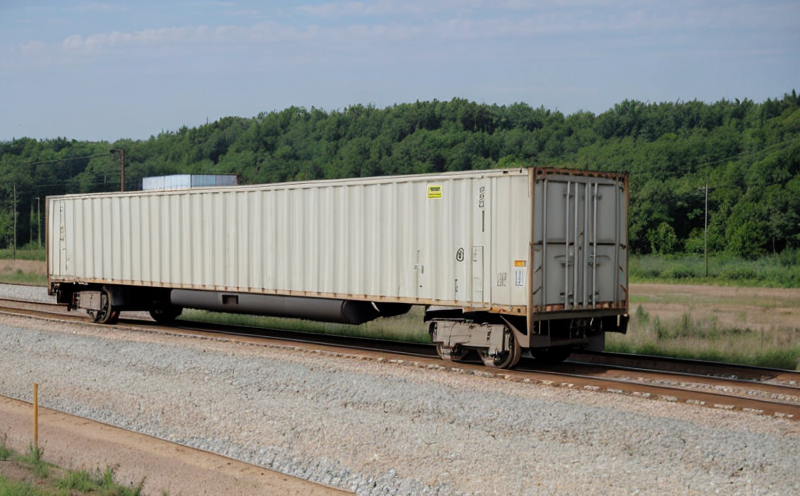UIC 510 Structural Testing of Freight Wagon Bodies
The UIC 510 structural testing standard is a cornerstone in ensuring the safety and integrity of freight wagons across Europe. This comprehensive test evaluates the load-bearing capacity, fatigue resistance, and overall structural robustness of wagon bodies under various simulated operational conditions. The primary audience for this service includes quality managers, compliance officers, R&D engineers, and procurement specialists who are responsible for maintaining high standards in railway transportation.
The UIC 510 test is not just a regulatory requirement but also a critical tool for ensuring the reliability of freight wagon bodies. Compliance with UIC 510 helps railway operators meet international safety standards and avoid costly downtime due to structural failures or operational inefficiencies. By adhering to this standard, transportation companies can enhance their reputation and trust among stakeholders.
The testing process involves a series of meticulously designed tests that simulate real-world conditions under which freight wagons will operate. These tests are crucial for identifying potential weaknesses in the wagon body's structure before they become significant issues during service. The test parameters include static loading, dynamic loading, and fatigue testing to ensure that the wagon can withstand both short-term and long-term stress.
For static loading tests, specimens are subjected to a range of weights and pressures to determine their load-bearing capacity. This ensures that the wagon body can safely carry heavy loads without compromising its structural integrity. Dynamic loading tests simulate the forces experienced during typical operations such as acceleration, braking, and turning on various tracks. Fatigue testing is particularly important as it assesses how repeated stress over time affects the wagon's durability.
Specimen preparation for UIC 510 testing involves ensuring that the test samples are representative of actual wagon bodies in terms of material composition, manufacturing processes, and geometry. This ensures that the testing results accurately reflect real-world performance. The instrumentation used during these tests includes high-precision load cells, strain gauges, displacement sensors, and data acquisition systems to capture detailed measurements.
The test reports generated from UIC 510 structural testing provide comprehensive insights into the wagon body's performance. These reports include detailed analyses of the loading conditions, material properties, and any observed deformations or failures. The results help manufacturers and operators make informed decisions about design improvements and maintenance schedules.
- Ensures compliance with international safety standards
- Identifies potential structural weaknesses early
- Safeguards against operational disruptions due to structural failures
- Enhances the overall reliability of freight wagon bodies
- Maintains a high level of trust among stakeholders
Quality and Reliability Assurance
The UIC 510 structural testing service is integral to maintaining the highest standards in quality and reliability assurance. By adhering to this stringent test standard, railway operators can ensure that their freight wagons meet the required safety levels as per international regulations.
Quality management within the context of UIC 510 involves meticulous planning and execution of all testing procedures to guarantee accurate results. This includes selecting appropriate specimens, using reliable instrumentation, and maintaining strict control over environmental conditions. Compliance officers play a crucial role in overseeing these processes to ensure that every aspect of the test adheres to the specified requirements.
In addition to ensuring compliance with UIC 510, quality managers must also focus on continuous improvement by analyzing test results and identifying areas for enhancement. This proactive approach helps in maintaining long-term reliability and performance of freight wagon bodies. R&D engineers leverage these insights to innovate and develop new materials and designs that further enhance the structural integrity of wagons.
For procurement specialists, ensuring compliance with UIC 510 is essential when selecting suppliers for manufacturing parts and components. By partnering with suppliers who adhere strictly to this standard, railway operators can secure high-quality products that meet all necessary safety requirements. This not only enhances the overall reliability of their fleet but also contributes positively to their reputation in the industry.
The UIC 510 structural testing service thus serves as a vital tool for quality and reliability assurance within the railway sector. By adhering to this stringent test standard, operators can safeguard against potential risks associated with structural failures and ensure the safety of passengers and cargo alike.





